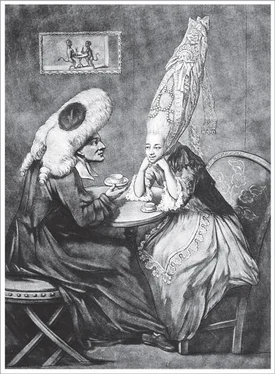Bill Bryson - At Home
Здесь есть возможность читать онлайн «Bill Bryson - At Home» весь текст электронной книги совершенно бесплатно (целиком полную версию без сокращений). В некоторых случаях можно слушать аудио, скачать через торрент в формате fb2 и присутствует краткое содержание. Жанр: Старинная литература, на английском языке. Описание произведения, (предисловие) а так же отзывы посетителей доступны на портале библиотеки ЛибКат.
- Название:At Home
- Автор:
- Жанр:
- Год:неизвестен
- ISBN:нет данных
- Рейтинг книги:4 / 5. Голосов: 1
-
Избранное:Добавить в избранное
- Отзывы:
-
Ваша оценка:
- 80
- 1
- 2
- 3
- 4
- 5
At Home: краткое содержание, описание и аннотация
Предлагаем к чтению аннотацию, описание, краткое содержание или предисловие (зависит от того, что написал сам автор книги «At Home»). Если вы не нашли необходимую информацию о книге — напишите в комментариях, мы постараемся отыскать её.
At Home — читать онлайн бесплатно полную книгу (весь текст) целиком
Ниже представлен текст книги, разбитый по страницам. Система сохранения места последней прочитанной страницы, позволяет с удобством читать онлайн бесплатно книгу «At Home», без необходимости каждый раз заново искать на чём Вы остановились. Поставьте закладку, и сможете в любой момент перейти на страницу, на которой закончили чтение.
Интервал:
Закладка:
Work began in the summer of 1705 and was trouble immediately. Many costly adjustments had to be made along the way. The principal entrance had to be changed when a cottage owner refused to move, so the main gate had to be located in an odd place at the back of the town, requiring visitors to pass along the high street, turn a corner, and enter the grounds through what even today feels oddly like a tradesman’s entrance (albeit rather a grand one).
Blenheim was budgeted to cost £40,000. Ultimately it cost about £300,000. This was unfortunate, as the Marlboroughs were notoriously parsimonious. The duke was so cheap that he refused to dot his i ’s when he wrote, to save on ink. It was never clear who was to pay for the work—Queen Anne, the treasury, or the Marlboroughs themselves. The duchess and Queen Anne had a close, rather strange, and just possibly intimate relationship. When alone they gave each other odd pet names—“Mrs. Morley” and “Mrs. Freeman”—to avoid any awkwardness arising from the fact that one of them was regal and the other was not. Unfortunately, the building of Blenheim coincided with a cooling of their affections, which added to the uncertainty of financial responsibility. Things grew more complicated still after the queen died in 1714 and was replaced by a king who felt no particular affection for, or debt to, the Marlboroughs. Many of the builders went unpaid for years as the disputes dragged on, and most eventually got only a fraction of what they were owed. Building work ceased altogether for four years, from 1712 to 1716, and many of the unpaid workers were understandably loath to return when work resumed. Vanbrugh himself didn’t get paid until 1725—almost exactly twenty years after work started.
Even when things were moving along, Vanbrugh and the duchess squabbled endlessly. She thought the palace “too big, too dark and too martial.” She accused Vanbrugh of extravagance and insubordination, and became implacably convinced that he was a bad thing. In 1716, she dismissed him altogether—though at the same time instructing the workmen to stay faithful to his plans. When Vanbrugh came with his wife in 1725 to see the finished building—a building on which he had lavished some two-thirds of his architectural career and one-third of his life—he was informed at the gate that the duchess had left standing instructions that he was not to be admitted to the grounds. So he never saw his finished masterwork except as a shimmer in the distance. Eight months later he was dead.
Like Castle Howard, Blenheim is in a baroque style, but even more so. Its roofline is a festive eruption of orbs and urns and other upright embellishments. Many people hated its monumental scale and ostentation. The Earl of Ailesbury dismissed it as “one mass of stone without taste or relish.” Alexander Pope, after exhaustively enumerating its failings, concluded: “In a word, it is a most expensive absurdity.” The Duke of Shrewsbury dismissed it as “a great quarry of stones above ground.” A wag named Abel Evans wrote a mock epitaph for Vanbrugh:
Lie heavy on him, earth, for he
Laid many a heavy load on thee .
Blenheim is a gloriously overwrought piece of work without question, but transfixing nonetheless, and the scale is so off the chart that it can hardly fail to awe the first-time visitor. It is hard to believe that anyone would want to live in such an oppressive vastness, and in fact the Marlboroughs barely did. They didn’t move in until 1719, and the duke died just two years later.
Whatever one thought of Vanbrugh and his creations, the age of the celebrity architect had begun.*
Before Vanbrugh’s day, architects weren’t much celebrated. Generally, fame went to those who paid for the houses, not those who designed them. Hardwick Hall, which we encountered in Chapter III, was one of the great buildings of its age, yet it is merely supposed that Robert Smythson was the architect. It is a pretty good supposition, for all kinds of reasons, but there is no actual proof of it. Smythson was in fact the first man to be called an architect—or nearly to be called an architect—on a monument of about 1588, in which he is described as “architector and survayor.” But as with so many others of his era, very little is known about his early life, including where he was born and when. He makes his first appearance in the records at Longleat House at Wiltshire in 1568, when he was already in his thirties and a master mason. Where he was before that is completely unknown.
Even after architecture became a recognized profession, most practitioners came from other backgrounds. Inigo Jones was a designer of theatrical productions, Christopher Wren an astronomer, Robert Hooke a scientist, Vanbrugh a soldier and playwright, William Kent a painter and interior designer. As a formal profession, architecture was actually very late developing. Compulsory examinations were not introduced until 1882 in Britain, and architecture wasn’t offered anywhere as a full-time academic discipline until 1895.
By the mid-eighteenth century, however, domestic architecture was getting a lot of respect and attention, and for a time no one had more of both than Robert Adam. If Vanbrugh was the first celebrity architect, Adam was the greatest. Born in 1728 in Scotland, the son of an architect, he was one of a quartet of brothers who all became successful architects, though Robert was the undoubted genius of the family and the one remembered by history. The period from 1755 to 1785 is sometimes called the Age of Adam.
A painting of Adam in the National Portrait Gallery in London, made in about 1770 when he was in his early forties, shows a kindly looking man in a powdered gray wig, but in fact Adam was not a particularly adorable fellow. Arrogant and egotistical, he treated his employees poorly, paying them little and keeping them in a kind of perpetual servitude. He fined them severely if they were caught doing any work other than for him, even a sketch for their own amusement. Adam’s clients, however, venerated his abilities and for thirty years simply couldn’t give him enough work. The Adam brothers became a kind of architectural industry. They owned quarries, a timber business, brickworks, a company for making stucco, and much else. At one point they employed two thousand people. They designed not just houses but every object within them—furniture, fireplaces, carpets, beds, lamps, and all else down to incidental objects like doorknobs, bell pulls, and inkstands.
Adam’s designs were intense—sometimes overwhelming—and gradually he fell out of favor. He had an inescapable weakness for overdecoration. To walk into an Adam room is rather like walking into a large, overfrosted cake. Indeed one of his contemporary critics called him “a Pastry Cook.” By the late 1780s, Adam was being denounced as “sugary and effeminate” and had fallen so far out of fashion that he retreated to his native Scotland, where he died in 1792. By 1831, he was so thoroughly forgotten that the influential Lives of the Most Eminent British Architects didn’t mention him at all. The banishment didn’t last terribly long, however. By the 1860s, his reputation was undergoing a revival, which continues now, though these days he is remembered more for his rich interiors than for his architecture.
The one thing all buildings had in common through Adam’s day was a rigorous devotion to symmetry. Vanbrugh, to be sure, didn’t entirely achieve symmetry at Castle Howard, but that was largely accidental. Elsewhere, however, symmetry was adhered to as an immutable law of design. Every wing had to have a matching wing, whether it was needed or not, and every window and pediment to one side of the main entrance had to be exactly mirrored by windows and pediments on the other side regardless of what went on behind them. The result often was the building of wings that no one really wanted. Not until the nineteenth century did this absurdity begin to end, and it was a remarkable property in Wiltshire—one of the most extraordinary ever built—that started the process.
Читать дальшеИнтервал:
Закладка:
Похожие книги на «At Home»
Представляем Вашему вниманию похожие книги на «At Home» списком для выбора. Мы отобрали схожую по названию и смыслу литературу в надежде предоставить читателям больше вариантов отыскать новые, интересные, ещё непрочитанные произведения.
Обсуждение, отзывы о книге «At Home» и просто собственные мнения читателей. Оставьте ваши комментарии, напишите, что Вы думаете о произведении, его смысле или главных героях. Укажите что конкретно понравилось, а что нет, и почему Вы так считаете.












